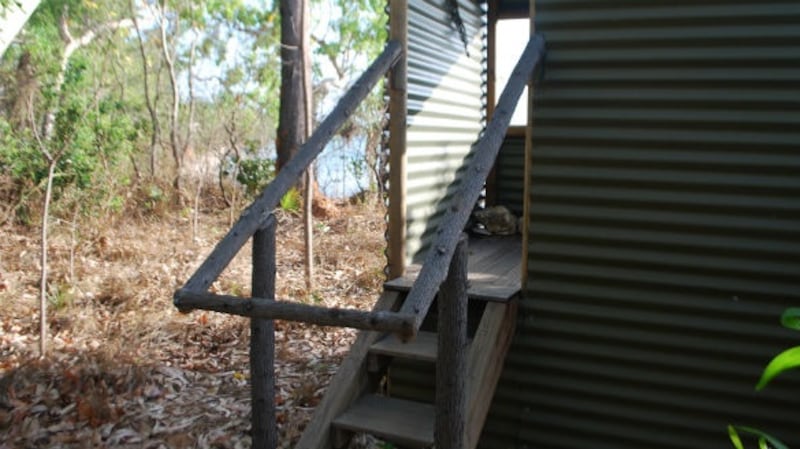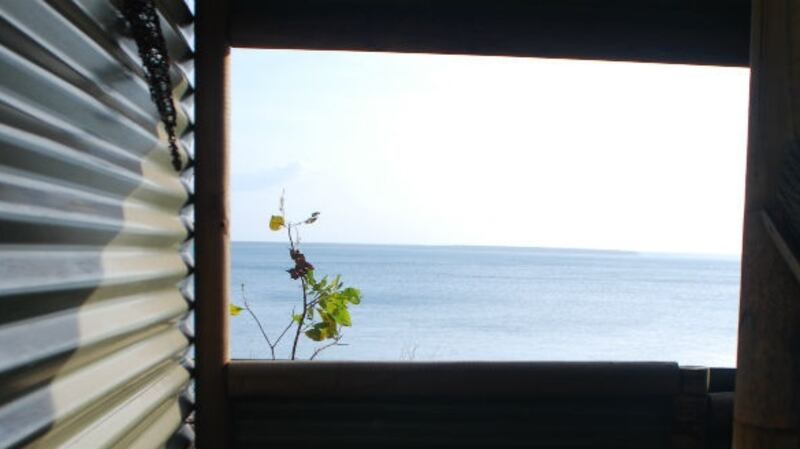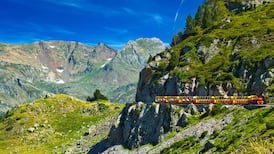Many of us try to nab a room with a view when we travel but how about a loo with a view?
A toilet perched on a cliff in Australia’s Northern Territory took the honours for the best toilet view in the inaugural Toilet Tourism Awards, run by travel research agency, mytravelresearch.com.
The toilet is located in the Venture North safari camp on the Cobourg Peninsula in Garig Gunak Barlu National Park in northern Australia. It overlooks the surrounding red cliffs and ocean where saltwater crocodiles, sting rays, turtles and countless fish regularly cruise.
The competition was judged by the company’s founders Bronwyn White and Carolyn Childs. According to White, the Cobourg toilet was a clear standout in the competition. “To be able to sit on the toilet and be able to watch the crocodiles and nature - there’s no other toilet like it,” she said. “Someone said it’s like watching a live National Geographic show from the toilet,” she said.

As a recent visitor to the camp, I can vouch for the bogside view. There is no door to the toilet, but a piece of wood that you slide across the entrance of corrugated iron to indicate that it’s engaged. Walk around a corner to a raised platform on which sits the throne – a waterless, odourless and environmentally friendly toilet. From your raised position, you can survey the view of blue in front of you. I spotted one croc, two sharks – a black-tip reef shark and a shovel-headed shark – and a possible turtle (it could have been a jumping fish). The three other toilets on camp, as well as the open showers, all offer views of the surrounding bush. The low metal walls protect the user from full exposure, though other than the inquisitive eyes of mongoose or passing wallaby, there is little passing traffic.
Another toilet in Australia was the joint winner of best design – the toilets at the Kathleen Buzzacott Art Studio in Alice Springs. These loos were built in 2016 and painted by the art studio’s owner.
These inaugural awards, which have started as a small-scale operation with 30 entrants this year, are part of a wider global tourism movement that aims to highlight the importance of clean toilets for travellers. The independently run Loo of the Year Awards were first launched in 1987. The awards are supported by the national tourism bodies of England, Scotland, Wales, Northern Ireland and Jersey. The objective is to encourage the highest possible standards in all “away from home” toilets. Last year the Giant’s Causeway Visitor Centre took the national honours for Ireland in the “best changing places” and “eco-friendly” categories; JD Wetherspoons in the “accessible toilet” category and Belfast City Council for the “best public toilet” category.

Tourist bodies highlight the importance of accessible and clean toilets to travellers - afterall it is something we all need when we are travelling, sometimes more than usual. Some city councils and tourist bodies are starting to highlight their “facilities” - Belfast City Council highlights the city’s toilets on its website, in the same way it promotes the zoo, waterfront and other attractions. The council’s public toilet page shows opening times and lists which bathrooms have access facilities and baby changing surfaces.
Australia has also taken note of the travellers need to pee. As part of the National Continence Programme, tourists - and locals - can use the National Public Toilet Map (toiletmap.gov.au), which provides information on over 16,000 publicly available toilets across Australia, including accessibility, opening hours, facilities such as showers, baby change and access. It has a mapping facility so you can even plan your trip with built-in toilet stops…if you really want to. Otherwise, just download the app from for easy access to information on the move.
When it comes to tourism, White suggests a good public toilet can have a “trickle-down effect” into the local economy, by enticing tourists to stop and look around. In fact, when it comes to stopping for longer, her business partner Childs suggests using toilets as “mini visitor centres” by providing free wi-fi.
A country well known for its high-tech toilets is Japan, but the selling point for what must be the most expensive toilet in the country is its focus on nature and tranquility. Named as the world’s best public toilet by interiors, design and architecture magazine DesignCurial, the Toilet in Nature at Itabu Station in Ichihara, Chiba Prefecture, cost more than a few pennies to create. It was designed by acclaimed Japanese architect Sou Fujimoto and visitors to the toilet are welcomed through a locked door with a small trail leading to a glass cubicle, which houses the women’s only toilet. The glass walls mean users - who are only admitted one at a time - can enjoy the “bountiful nature” and a sense of “peace” amongst cherry, plum and peach trees over-looking a secret garden. A two-metre wooden log wall high wall ensures privacy and claims that it is the largest toilet in the world at 200m sq. The structure opened in 2012 in preparation for the city’s annual art festival after officials decided that there were no tourist friendly toilets for visitors. Its price tag? Almost €90 million.

The Toilet Tourism awards were launched on World Toilet Day last year. The UN day of action will be held on November 19th this year and the aim is to raise awareness that the provision of clean toilets is closely related to health issues and safety, especially that of women. The UN has noted: “2.5 billion people do not have access to proper sanitation, including toilets or latrines, with dramatic consequences on human health, dignity and security, the environment, and social and economic development. World Toilet Day seeks to put a spotlight on the threat of sexual violence that women and girls face due to the loss of privacy as well as the inequalities that are present in usability.”










